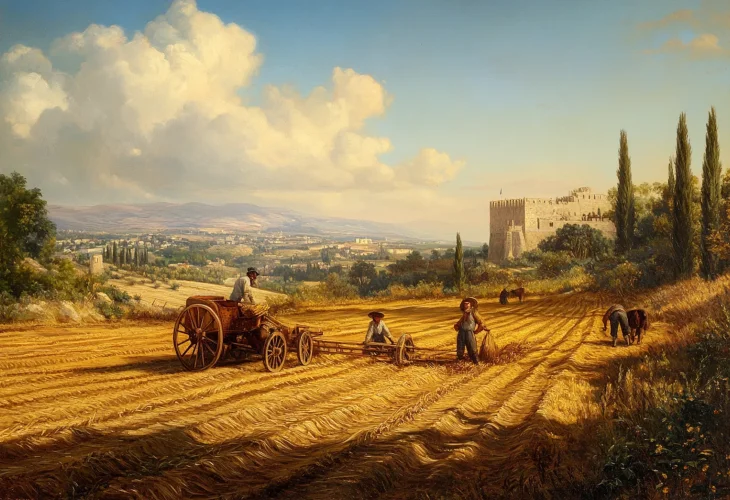Building a Legacy: Montefiore's Agricultural Dreams in 19th Century Israel
On his 1839 visit, Moses Montefiore envisioned leasing land from Egypt's ruler to develop Jewish agricultural settlements in what is now Israel. Discover his ambitious plans for 200 villages!

In 1827, an extraordinary event happened for the Jewish people in Zion. Moses Montefiore arrived for a visit to the Land of Israel.
According to the newspaper "HaTzefira" in 1885, issue 33, Montefiore's private secretary reported a dream that sparked this visit. Elijah the Prophet appeared, extending his hand toward Israel, uttering the words "purchase everything." The dream repeated multiple times until Montefiore decided to visit the land. He toured with his wife Judith, considering ways to support the Jewish settlement.
On his second visit in the summer of 1839, Montefiore met with Muhammad Ali, the ruler of Egypt and the Land of Israel, negotiating a fifty-year lease on land for 200 villages!
Where did Montefiore's initiative originate, and whom did he intend to settle in these villages? Professor Eliav explains: "When Montefiore arrived on his second visit in 1839, he met Jews from Safed who wished to engage in agriculture, asking him to purchase or lease suitable land. Rabbi Avraham HaBrotch, a leader of the Chassidic community, was the first to sign this memorandum. Jews from Tiberias expressed similar desires. Various individuals offered him villages for purchase, seeking his help for financial backing."
In Jerusalem, Rabbi Mordechai ben Avraham Shlomo Zalman Tzoref, the first Jew involved in agriculture, presented Montefiore with a detailed memorandum suggesting he buy a village. Over time, a model Hebrew village would be established there. The author noted presenting the plan to Jerusalem's leaders and receiving much encouragement. Aryeh Naaman, secretary of the Perushim community, also expressed aspirations for agricultural work in a detailed memorandum. Montefiore encountered similar requests in Safed.
The newspaper HaTzefira (1884 issue 49) describes: "Before their arrival in the city [Safed], thousands of Jews gathered to greet them with honor, and there Moses negotiated with community leaders to encourage the younger generation to work the land. The entire city's residents embraced the proposal and agreed it was beneficial."
Historian Dr. Aryeh Morgenstern writes that Montefiore is often credited with many initiatives that reshaped the Jewish settlement in 19th-century Israel, particularly the introduction of productivity and proposals for Jewish agricultural settlement. However, he notes, new historical research reveals otherwise: "A review of the historical process shows that this initial connection between Montefiore and the settlement resulted from external initiatives. Montefiore's willingness to act for the benefit of the settlement was a response to their initiative, not his own. This was true for fundraising for the Hurva Synagogue, and similarly so for crafts, land acquisition, and agricultural work."
Morgenstern elaborates on initiatives by the Perushim leaders in the 1830s, before Montefiore's arrival in 1839: Moses Zach, the first immigrant from Germany in the 19th century, stayed in Western Europe from 1835 to 1839 and discussed fundraising for land acquisition and cultivation with various parties.
In 1837, Jerusalem's Jewish leaders approached Eliyahu Pagotto, the Jewish consul in Aleppo, proposing he fundraise in Europe to purchase housing and craft facilities like oil presses, mills, and shops.
Simultaneously in 1837, the Perushim appealed to Muhammad Ali and to Zvi Hirsch Lehren (head of clerks and officials) in Amsterdam, asking the former for state lands and the latter for funds to purchase them to ensure the economic sustainability of Israel's residents.
Even the printing press Montefiore sent to Israel happened only after Rabbi Israel Beck requested it, as his press in Safed was destroyed again in the 1837 earthquake.
"Undoubtedly, even in 1839, Moses Montefiore did not initiate the idea of leasing land from the Egyptian government. This idea was an initiative of the settlement, and Montefiore favorably responded to their request, ready to delve deeply into the matter."

